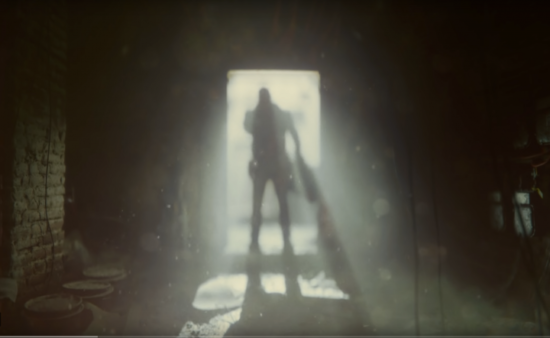Software that enables jaw-dropping experiences.
The latest release of Unity (2019.3) with High Definition Render Pipeline (HDRP) is coming soon. HDRP, says Unity, focuses on optimizations that can render resource-intensive visuals while maintaining constant, steady frame rates. Creators can cut loose and make stunning projects without worrying about throttling graphics to optimize for low-end devices, enabling them to create jaw-dropping experiences for the next generation of gaming hardware. For a refresher, have a look at Unity’s demo, The Heretic.
Being able to leverage hardware acceleration is critical to getting realtime ray tracing—Unity is currently relying on DXR (DirectX Ray tracing). The company says they’ve architected their realtime ray tracing solution to be platform agnostic. And they are keeping an eye on how ray tracing standardization evolves and plan to support those with the broadest user reach.
Unity’s ray tracing is built on top of their High Definition Render Pipeline (HDRP), with C# scripts and shaders, which the company says allows one to quickly reload and iterate. The company brags that its solution is built with choice, flexibility, and power in mind. They provide a wide variety of ray tracing effects for one to play with. They claim their realtime ray tracing solution allows creators to author once, and then determine whether they want to utilize it for raster-based creations, or realtime ray tracing.
C# and shader workflows give developers great flexibility on how to make changes and dig into the source as they have full source code access to the HDRP implementation, including the realtime ray tracing tech. With C#, one of the main advantages for the graphics developers is the super quick hot reload iteration loop for quick feedback.
Unity’s VP of Graphics Natalya Tartarchuk has been demonstrating HDRP at Unity events including GDC and the company’s Unite gatherings. Key to the power of Unity’s HDRP is the ability to make changes and see them rendered in the editor. With this release, that capability is now available to Unity’s users. The last count for Unity developers is 7 million, a figure offered by CEO John Riccitiello in an interview with VentureBeat.
With this approach, Unity thinks they are providing a solution that maximizes performance, gives great flexibility and control to the developers.
Unity is using AMD’s Radeon-Rays for accelerating lighting workflows through a realtime path tracer with Unity’s GPU progressive light-mapper, which is built to utilize GPU for path tracing execution.
They support a lot of material types, like FBX, which includes FBX standard material, Autodesk Interactive material, 3ds Max Physical material, and Arnold Standard surface.
HDRP, says Unity, empowers developers to realize high fidelity visuals; to meet that goal by providing a lot of material options out of the box. With HDRP’s Lit Shader, advanced effects like parallax occlusion mapping or tessellation are available in one click.
The strongest addition that HDRP brings to material rendering is in its lighting model. HDRP offers unified and coherent lighting. By unified lighting they mean whether one’s material is opaque, transparent, or volumetric, they will have a coherent look. Coherent lighting means that a material will interact directly with any light source even when modified by decals, for example.
High fidelity content creation is one of the biggest bottlenecks to realtime graphics today. Recognizing that, Unity said they set out to make it easier for all developers enabling them to create once and they have both raster and realtime ray tracing effects. The company says they provide the ability for users to author reflection shaders in the shader graph tool so that they can customize it as needed for their objects.
Unity says their platform is agnostic and they plan to support all widely adopted ray tracing GPUs as they’re available.
We asked Unity what was their impression of Crytek’s Neon, and did they have any plans to offer a similar capability?
It’s certainly impressive seeing ray tracing that doesn’t require ray tracing graphics cards, we were told.
The driving principle for us, they said, is to provide the right set of tools for what you aim to achieve. If you’re looking for stunning high-fidelity visuals, while hitting performance goals on a wider range of hardware, then ray tracing isn’t necessarily the right choice.
“Rasterization isn’t dead yet,” says Tartarchuk. “It brings a fair amount of advantages to rendering efficiency. In HDRP, we are already performing physically accurate computations for lighting and shadowing. Our realtime short cinematic film, The Heretic, demonstrates how far you can push fidelity without having to rely on ray tracing.”

Right now, says the company, we’re focused on making sure creators can take the best advantage of available hardware resources while delivering stunning high fidelity results.
What do we think?
Ray tracing is a hot subject now, and several companies are offering various solutions—from hardware accelerators to software kernels, and clever algorithms that will run on a mobile device.
I remember the transition from monochrome to color, from CRTs to LCDs, and script programming to object level. The enthusiasm and expansion of ray tracing tools and applications employing ray tracing are exciting and have momentum. If all goes well in three years, we won’t discuss it anymore.
But if you want to learn about the market for ray tracing software, take a look at our report. And if you’d like to know more about the subject in general and a little of the history, get a copy of this book.
For more on Unity’s ongoing rendering development, see:
Unity at GDC 2019





